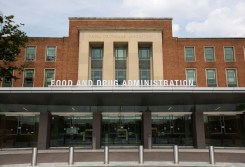‘Hive’ computing could help FDA assess next-gen sequencing data
The server room for the Food and Drug Administration’s “Hive” literally buzzes with activity as it harnesses massive amounts of computing power to analyze detailed information on DNA and RNA sequences.
More pharmaceutical companies are making the foray into next-generation genetic sequencing as they develop or improve drugs and vaccines. And researchers working at the Hive, short for High-Performance Integrated Virtual Environment, want to better equip FDA evaluators to analyze that kind of data as it starts to turn up in drug and vaccine regulatory submissions to the agency.
“The goal of this research is to understand how [next-generation genetic sequencing, known as] NGS can be used to support the evolution of a regulated product,” said Vahan Simonyan, lead scientist for the Hive.
The research is critical to the FDA’s mission, said Carolyn Wilson, associate director for research at the agency’s Center for Biologics Evaluation and Research, where the Hive is housed. She said two years ago, the agency’s Center for Drugs received NGS data in a regulatory submission and, when officials conducted an analysis, their results were different from the firm’s original conclusions.

Carolyn Wilson, associate director for research at the FDA’s Center for Biologics Evaluation and Research (FDA)
“There are so many variables that can impact what these data mean and how to interpret them,” Wilson said. “Our scientists, our reviewers really need to understand and evaluate the technology and need to have the tools to do it.”
NGS is advanced technology that can conduct fast, high-resolution sequences of DNA and RNA. Wilson said it’s the difference between learning the “average” ethnicity of a room full of people is Caucasian, and getting the specific genetic background and country of origin of each person in the room.
FDA’s Hive allows users to submit NGS data through a Web portal. From there, the Hive uses its super powerful computing power, vast library of data and algorithms to scrutinize the data. In a blog post she wrote last year, Wilson said one algorithm that the Hive uses could help determine whether a flu virus strain in a vaccine could reduce its effectiveness — or even cause infections. “When ready and approved by FDA for use, we will use this powerful, CBER-managed, inter-center resource to handle regulatory submissions,” she wrote.
But in the mean time, the program has 80 large and small-scale research projects it is conducting.
“There’s just a lot of activity in the outside world using NextGen sequencing,” she told FedScoop. “And essentially it’s one of those technologies where the potential application of the technology is only limited by the imagination of the individual scientists who are applying it.”
Indeed, Richard Daly, CEO of genomics analytics company DNAnexus, said pharmaceutical companies are increasingly researching how they can use genomics to develop drugs. He pointed to biotechnology company Regeneron Pharmaceuticals’ work with Geisinger Health System to sequence the genomes in patients as a way to find genetic markers that could make someone predisposed to certain diseases.
“The truth is nobody’s really sure what information is going to end up being valuable in next generation,” Daly said. “When it cost $25,000 to do a sequence, people were hesitant. But now that the cost is dropping to $1,000, the theory is, as long as we’re doing anything, lets get all the information.”
DNAnexus is working with FDA on precisionFDA, a platform to allow scientists to share research around next-generation sequencing. It’s part of FDA’s response to the White House’s Precision Medicine Initiative, announced earlier this year. Just last week, FDA unveiled a “closed beta” version of the platform and FDA press officer Jennifer Corbett Dooren told FedScoop that the Hive team contributed some data for the effort.
Several high-performance computing projects, like the Hive, are spread out across FDA’s centers, said agency Chief Information Officer Todd Simpson. But, he said some of these efforts were stood up without much consideration for how to maintain the necessary infrastructure and staff. To address that, Simpson said he wants to collaborate with researchers on these projects to find ways to centralize FDA’s high-performance computing efforts.
“The goal here is not to stymie any work that’s going on here in the centers,” Simpson told FedScoop. “The goal here is to make things more effective and more efficient.”





